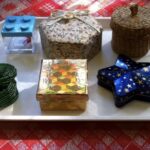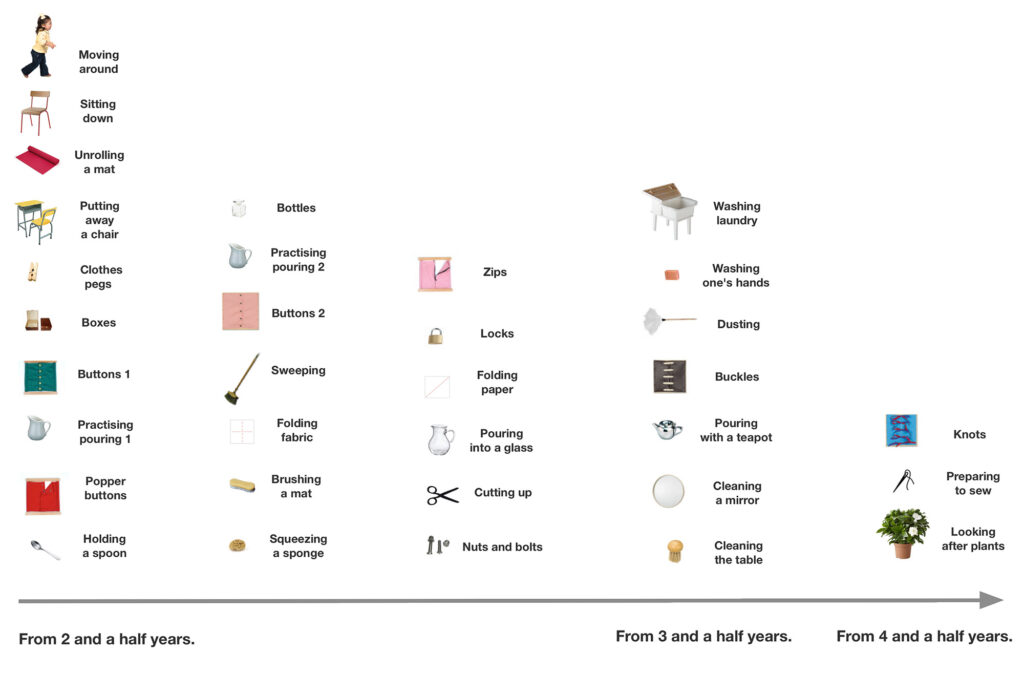Practical life activities are aimed to help the child to be more independent and work on his executive functions. So depending on the age of your children, I will suggest activities that will help them develop specific ‘skills’.
Keep in mind that some complex activities require the mastery of simple gestures. That is why you must first introduce, to the child who does not yet know how to pour water , ‘pouring dry ingredients’ activities such as beans, rice or beads.
All these activities focusing on developing the child’s motor skills will prepare him also to be independent in his/her daily life and also prepare the child for writing.
Here is 5 activities that you could do with your child at an early stage (18months) to develop his/her fine motor skills, his/her concentration and memorization :
- Transferring with a spoon from a bowl to another: you can use pompoms, rice, beans, the aim here is to work on the spooning skills, the eye-hand coordination.
- Putting spaghetti or Q-tips in a stainer, or you can even use an empty tissue box and make small holes inside for the child to put Q-tips inside the holes, this activity
- Pouring from a jug to another using dry ingredients (dry pouring if your child doesn’t master pouring water yet), you can use all sort of ingredients such as beans, rice, beads
- Opening and closing boxes (go from the simple ones to boxes that need to be unscrewed)
- Open and close clothing pegs on a tea box or a basket for example





This is not an exhaustive list, of course you adapt them according to what your children like, the important thing is that they have fun during these activities and that they can concentrate on what they are doing.
In what order should these activities be presented?
Here is a table that you can find on ‘Celine Alvarez website’, which can serve as a guideline when you’re getting started. You can download the table here, and find a lot of more informations. The simplest activities are on the left. The level of difficulty increases as you move to the right.

Just keep in mind that you have to experiment with your child, to know if he is ready for an activity, if he is ready or not. This table is just to guide you but not mandatory, your child can be ready before to master some gesture so just have fun by experimenting with your child.
